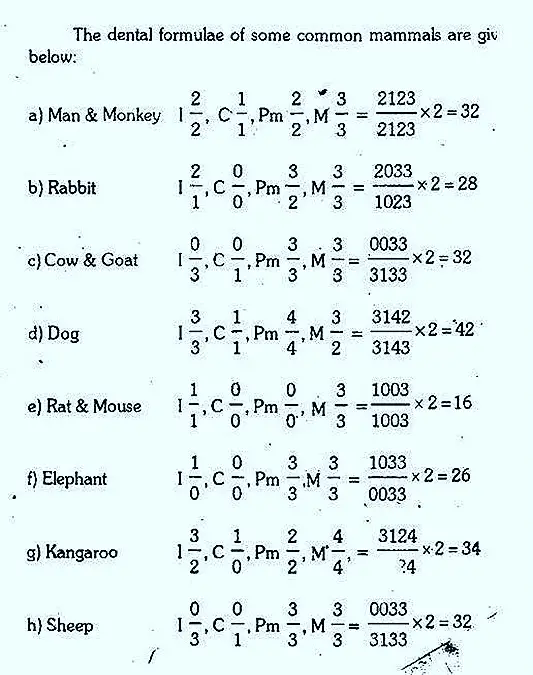Dental Formula in Mammals

Mostly the number of teeth is fixed in each mammalian species. Mammalian heterodont dentition is expressed by a "dental formula". The number and arrangement of teeth in each half of the upper and lower jaws are constant and identical. Hence the teeth can be expressed by using the initials - I, C, Pm, and P4. The number of teeth differs in the various orders of mammals and is closely related to their feeding habits.
The typical number of teeth in mammals is 44. This can be observed in Horse and pig and their dental formula are given below.

The numerator indicates the number of teeth on one side of the upper jaw. The denominator indicates the number of teeth on one side of the lower jaw. As the two halves of each jaw have the same number and kind of teeth, the number of teeth on one side alone is usually expressed in the formula.
The dental formulae of some common mammals are given below.
